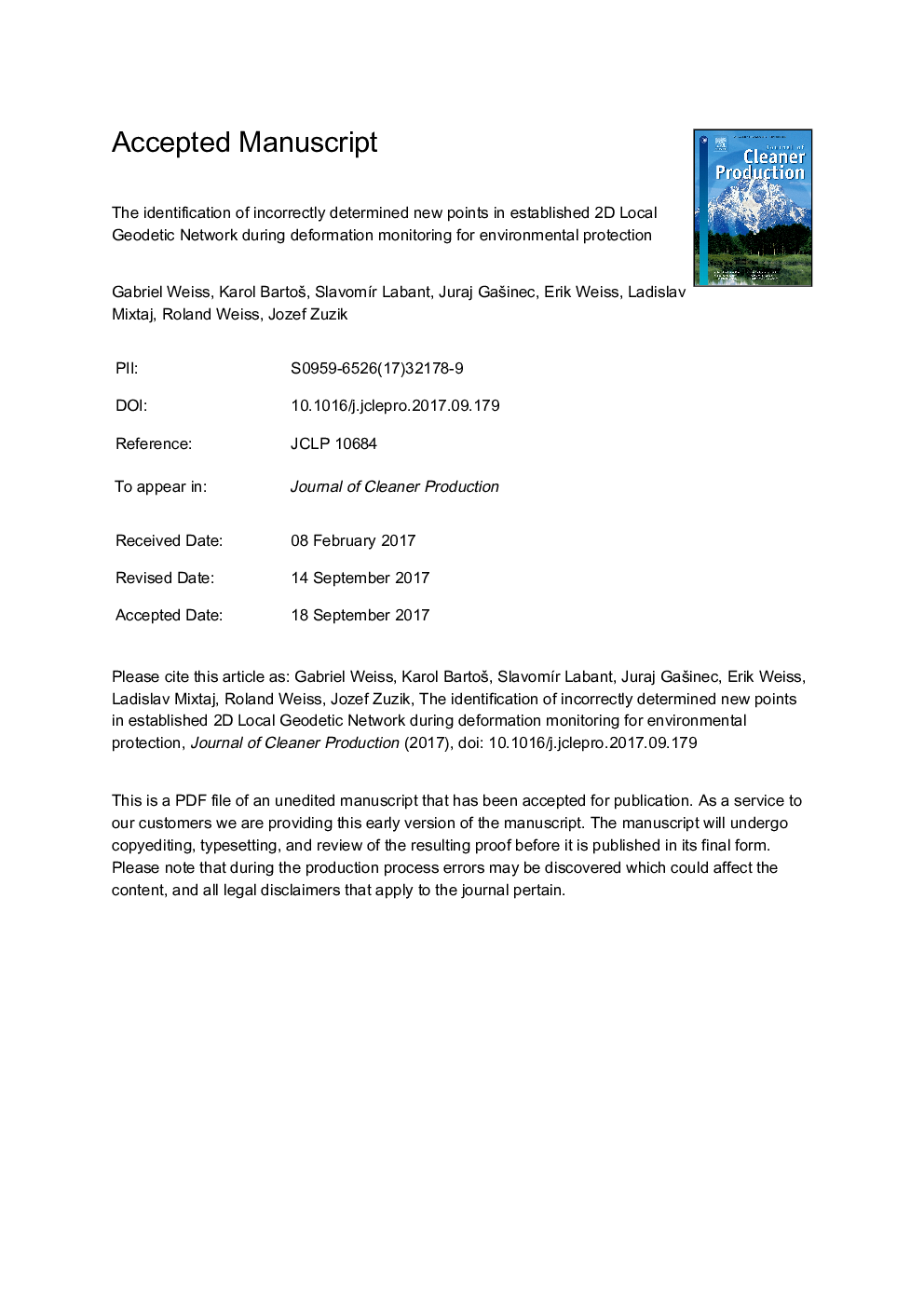| Article ID | Journal | Published Year | Pages | File Type |
|---|---|---|---|---|
| 5479263 | Journal of Cleaner Production | 2018 | 13 Pages |
Abstract
Deformation analyzes are important for long-term monitoring of areas, where, in the first place, it is necessary to take into account human safety and environmental protection for the purpose of sustainable development of human society. The quality of the results of deformation analysis will also be affected by the quality of establishment of the geodetic network. When a new Local Geodetic Network (LGN) is established, for example, during deformation monitoring (landslides, open-pit mining, excavations, etc.) for the purpose of environmental protection, its determination can be influenced by some mistakes: a) geometric quantities measured can be contaminated by blunders, b) compatibilities of some "old" points in the area of LGN can be incorrect, c) appropriate coordinates of some new points may be defective. The case c), using two methods - Least Squares (LSM) unconstrained adjustment; - iteratively reweighted LSM of Robust Estimation, is analyzed in the paper. The main objective of this paper is to compare the adjustment of the geodetic network by the Gauss-Markov model based on GMM with full rank and robust LSM adjustment. The main adjustment steps with important numerical results are presented for both methods. The method how to detect the presence of the used wrong approximate coordinates of new network points is addressed, and the detection approaches are given for both adjustment procedures. The results of both adjustment procedures summarized in the Discussion indicate that the combination of these procedures is the most suitable way of detecting errors in a geodetic network.
Related Topics
Physical Sciences and Engineering
Energy
Renewable Energy, Sustainability and the Environment
Authors
Gabriel Weiss, Karol BartoÅ¡, SlavomÃr Labant, Juraj GaÅ¡inec, Erik Weiss, Ladislav Mixtaj, Roland Weiss, Jozef Zuzik,
